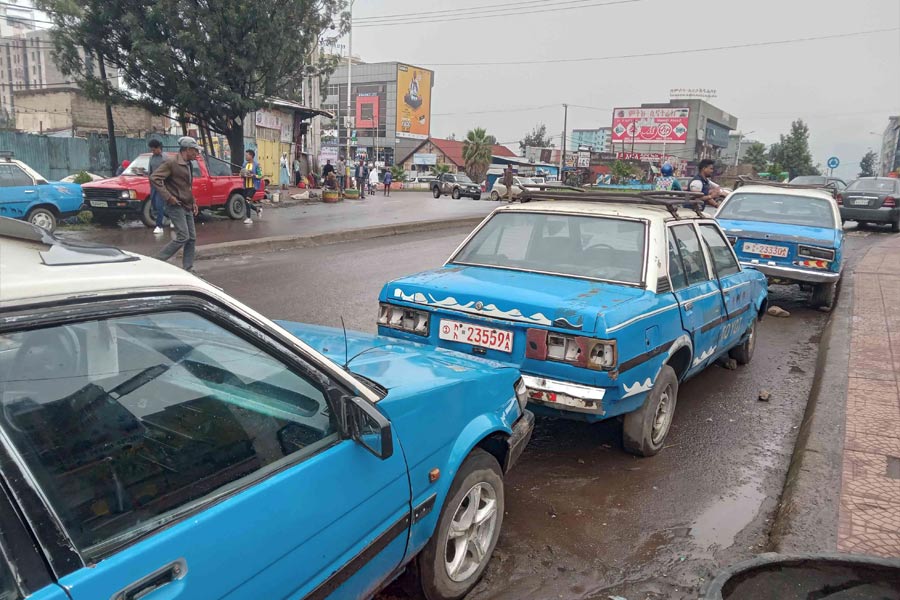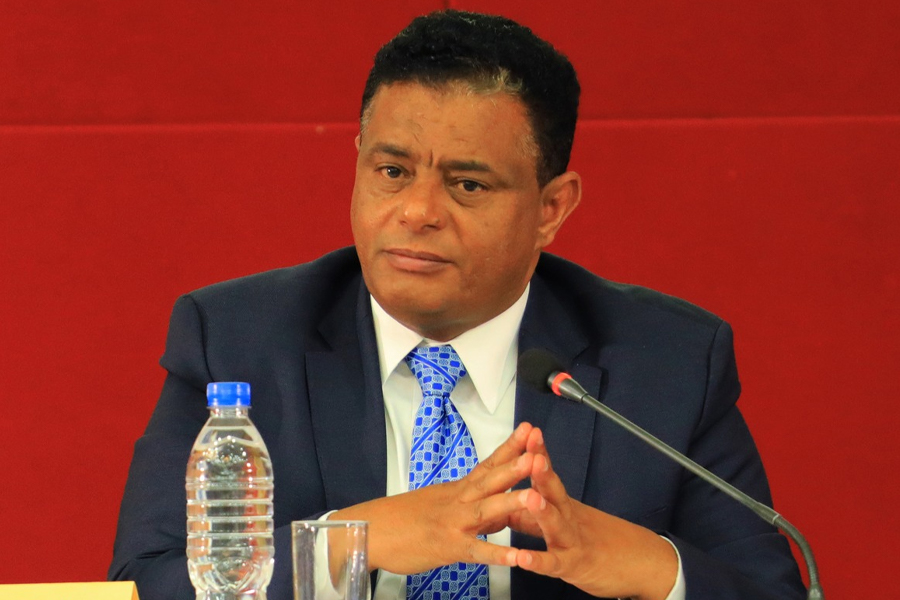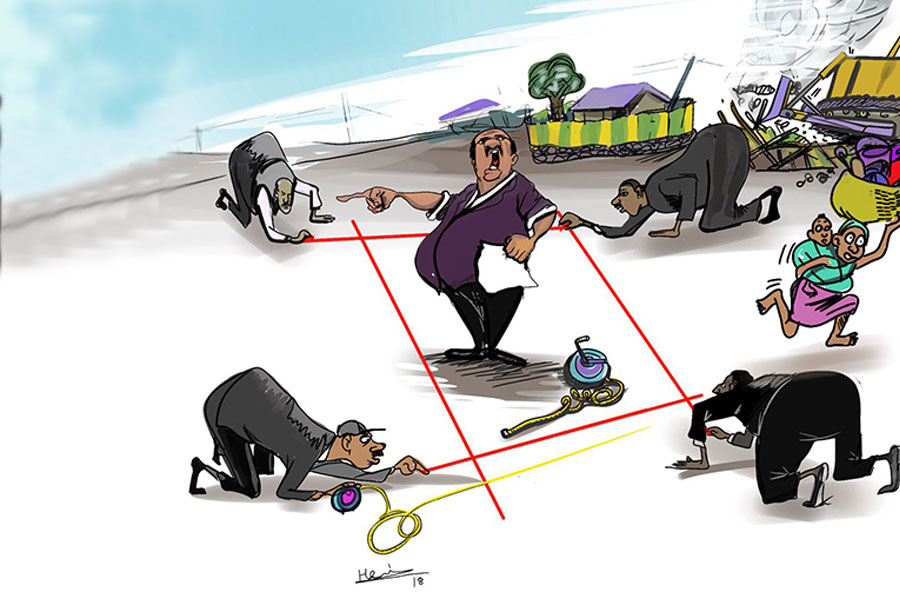
My brother and I visited the Bole Arabsa neighborhood after a funeral, where my brother noted the significantly better air quality compared to downtown Addis. He described the fresh air as "food for the lungs." I didn't notice the difference even though I live nearby in Ayat. However, I am affected by car exhausts downtown, especially during traffic jams—forcing drivers to close their windows. The city suffers from several poorly maintained vehicles that emit excessive exhaust, causing visibility issues and further contributing to noise pollution.
The sibling of a deceased relative, who lived in Germany for many years, echoed my brother's observations about air quality in Addis. He noted the stark contrast between Germany's clean, well-engineered cars and the polluted air in his hometown. He mentioned that air quality improves as one moves from Megenagna to CMC and beyond. After spending time in downtown Addis, he experienced dark nasal discharge, highlighting the respiratory issues many face due to pollution from car exhaust and other sources, often misattributed to allergies or flu. This difference in perception may be more pronounced for those sensitive to pollution, especially after living in a cleaner environment.
Although the total vehicle population is relatively small compared to other major African cities, the per capita exhaust contribution is significant in our capital. I am particularly worried about vulnerable groups like traffic police, street vendors, and beggars who spend long hours in this polluted environment. Many people are too focused on daily challenges to recognize the serious health risks posed by street pollution.
Many motorists frequently clear their throats and experience nasal congestion. Prolonged exposure to auto exhaust can lead to serious health issues, including bronchitis, asthma, and skin problems. Being in such traffic at peak hours often results in headaches and nausea due to carbon monoxide inhalation.
One evening, while stuck in traffic, I observed a haze of polluted air from dust and car exhaust, owing to the street lighting from a corridor development project. An old Isuzu mini truck emitted thick, pungent exhaust, forcing other drivers to close their windows or change lanes. The truck's questionable maintenance contributed to the already smoky atmosphere.
Awareness of pollution in Southeast Asian and Far Eastern countries is generally higher than in other regions, with many people wearing facemasks long before the COVID-19 pandemic. Over 90pc of the world’s top 100 polluted cities are in the Indian subcontinent and China, primarily due to high population density and extensive coal use for energy. In India, smog—a mix of fog and smoke—poses a significant public health issue, leading to school closures on particularly polluted days to protect the health of children and youth.
Electric vehicles (EVs) are increasingly visible on the streets of Addis, as there is a growing belief that reducing reliance on fossil fuels can help mitigate pollution from gas-powered vehicles. The government is promoting EV imports to lower pollution levels, despite their higher cost and the underdeveloped charging infrastructure. While many support EVs as a cleaner alternative, critics argue that they can also be pollutants. Concerns include the lengthy life cycle required for EVs to offset their carbon footprint and the challenges of disposing of toxic batteries after their lifespan, which can be expensive and environmentally problematic.
In Addis Abeba, pollution extends beyond the air to the city’s rivers, which are heavily contaminated with waste and toxic substances. These rivers serve as dumping grounds for garbage, industrial waste, and even human waste, leading to a dire environmental situation. There are no effective controls to prevent this pollution, and the Akaki River, in particular, is surrounded by small city farms cultivating vegetables along its banks.
A 2020 study by Ethiopian scientists published in SpringerOpen highlights the severe impact of heavy metals on the Little Akaki river system in Addis Abeba. The river is under significant stress due to improper dumping of domestic and industrial waste, jeopardizing its ecological, social, and economic functions. The study found that inorganic pollutants, including toxic heavy metals, accumulate in the river's sediment and have been detected in vegetables like cabbage grown in the area. Alarmingly, these heavy metals, such as cadmium, chromium, and lead, persist in the human body indefinitely without decomposition.
The polluted river systems in Addis Abeba serve as breeding grounds for parasites, posing a serious public health risk due to the presence of excreta. While urban rivers can enhance recreation, generate jobs, and boost the economy, Addis's rivers are currently eyesores and should be avoided. The government has announced a project to clean and develop these rivers into recreational areas and tourist attractions, which would significantly benefit the city. I hope for a future where the rivers become pleasant oases for relaxation amidst urban life.
Noise pollution in Addis Abeba is a significant issue, largely ignored and poorly enforced. The city is filled with loud religious services amplified by powerful speakers, while nightclubs and bars play music at high volumes in residential areas, disrupting peace and privacy. The lack of concern for others' rights is frustrating, as loud advertisements from vehicles further contribute to the chaos. This rampant noise pollution affects the sick, those seeking quiet to work, and anyone trying to rest, highlighting a widespread insensitivity to the problem.
Germany exemplifies effective noise regulation, with residential noise levels capped at 55 decibels during the day and 40 at night. The European Union enforces strict noise regulations, including a curfew on flights between 11:30 PM and 5:30 AM. Additionally, Germany promotes cycling over driving, encouraging citizens to reduce their carbon footprint despite its strong automotive industry.
The uncontrolled noise pollution in the society highlights a lack of attention to improving quality of life, despite existing laws that address these issues. Enforcement of these regulations remains inadequate, and there is a significant need for education and awareness to bridge the gap in public understanding. As societal attitudes toward pollution evolve, initiatives like electric cars, river basin development, and noise reduction could lead to improved public health, safety, and socio-economic development, promising a brighter future.
PUBLISHED ON
[ VOL
, NO
]

Radar | Nov 09,2024

Commentaries | Mar 01,2024

Commentaries | Jan 03,2021

Radar | Sep 14,2025

My Opinion | Feb 25,2023

Sponsored Contents | Mar 28,2022

Radar | Sep 19,2020

Fortune News | Aug 11,2024

Fortune News | Dec 30,2023

Radar | Nov 16,2024

Dec 22 , 2024 . By TIZITA SHEWAFERAW
Charged with transforming colossal state-owned enterprises into modern and competitiv...

Aug 18 , 2024 . By AKSAH ITALO
Although predictable Yonas Zerihun's job in the ride-hailing service is not immune to...

Jul 28 , 2024 . By TIZITA SHEWAFERAW
Unhabitual, perhaps too many, Samuel Gebreyohannes, 38, used to occasionally enjoy a couple of beers at breakfast. However, he recently swit...

Jul 13 , 2024 . By AKSAH ITALO
Investors who rely on tractors, trucks, and field vehicles for commuting, transporting commodities, and f...

Oct 11 , 2025
Ladislas Farago, a roving Associated Press (AP) correspondent, arrived in Ethiopia in...

Oct 4 , 2025
Eyob Tekalegn (PhD) had been in the Governor's chair for only weeks when, on Septembe...

Sep 27 , 2025
Four years into an experiment with “shock therapy” in education, the national moo...

Sep 20 , 2025
Getachew Reda's return to the national stage was always going to stir attention. Once...